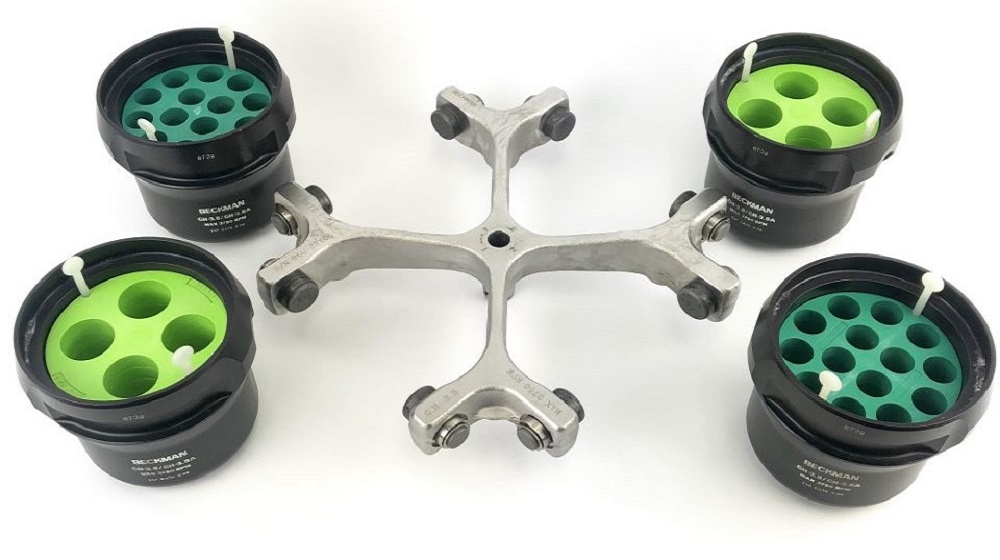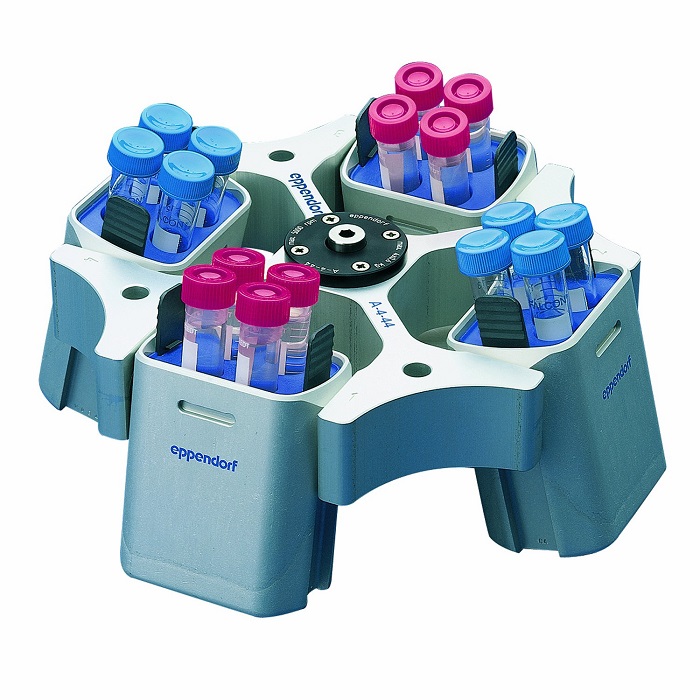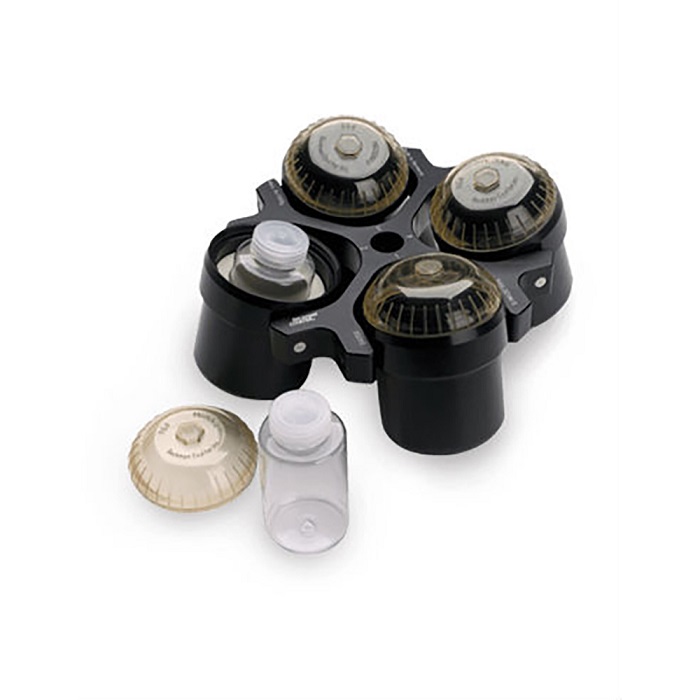In this article from Linquip, we’ll talk about swinging bucket rotors and tap into everything you need to know about its functions, uses, etc. You’ll read about swinging bucket rotor diagram, its advantages and also how to take care and maintain swinging bucket rotors to have a more durable system that works for a long time. Use this article as your main guide to choose the right centrifugal rotor and reach your desired results.
Now, first things first:
What is swinging bucket rotor?
Swinging bucket rotors are one of the centrifuge rotors. There are two types of centrifugal rotors: Swinging bucket and fixed angle rotor. The difference between swinging bucket with the other rival in centrifuge rotors is the angle they are operating at. Fixed angle rotors are fixed at a 45-degree angle but swinging rotors are not fixed in a place. In a Swinging bucket rotor, buckets are horizontal while working and vertical when stopped.
Swinging bucket rotor diagram
There are buckets in a swinging bucket rotor. These buckets are vertical when the system is not moving, but change their position into horizontal during acceleration of the rotor. This helps the solution in the tube and the tube to be aligned perpendicular to the axis of rotation, and also parallel to the applied centrifugal field. Then during the deceleration of the swinging bucket rotor, the tube will return to its original position.
Swinging bucket centrifuge balancing
Swinging bucket rotors have parallel geometry, enabling the sample to move through the density gradients with no interruptions. On the other hand, in a fixed angle rotor, the sample hits the wall and smears. The tubes used in swinging bucket rotors are glass centrifuge tubes that are specifically designed for centrifugation at low speeds. These tubes disintegrate at higher centrifugal fields. The tubes used in the swinging bucket rotors are thin walled tubes that are protected by the bucket. One of the differences between swing bucket rotors and fixed angle rotors is in their tubes. We already mentioned that swinging bucket rotors have thin walled tubes, but fixed-angle rotors have thick walled tubes due to its specific design. These tubes are filled at an accurate level and they’re also closed with a cap to endure the speed of the rotor.
Advantages of swinging bucket rotors
Swinging bucket rotors have slow runtime, full path length, and great resolution. The great advantage of using swing bucket rotors is that they provide high vessel capacity as well as great vessel flexibility which is because of the different adaptor options that have been designed and are available for them. Not to mention that rotors are capable of separating micro-molecules and macro-molecules in solutions.
The only disadvantage of this rotor is that due to the moving buckets, the rotor experiences high metal stress resulting in lower maximum G-force. It also slows down the speed of the centrifugation.
When would you use a swinging bucket rotor and how do they operate?
Swinging bucket rotors enable the tubes to change their angle while the rotor is running. They are a great choice for separating large volume samples at a low speed. Swinging bucket rotors are specifically useful for the times that samples are to be resolved in rate zonal gradients.
Swing bucket rotors have buckets that swing out horizontally at a 90-degree angle. The rotation of these buckets helps the pellets being located in the middle of the tube bottom.
Swing bucket rotors are used when high vessel flexibility is needed. You can also use this type of rotors when you need to have the pellet in the middle of the tube bottom. They have high sample throughput as well which is another plus point for this rotor.
Swinging bucket rotors help speed up centrifuging that normally takes hours or days when operating with the force of 1G (normal gravity). These rotors speed up the process and take only a few minutes to provide the desired results under a force of 10000G.
In these rotors, more dense materials separate toward the angle of the centripetal force and in this specific design, this pelleted material will end up at the bottom of the conical centrifuge tube.
How to take care of a swing bucket rotor
Since rotors are highly corrosive, they should be handled with care to make sure nothing scratches them. Aluminium rotors have protective anodized coating but it’s very thin and cannot protect the rotor against corrosion at a high level.
Make sure to wash the swinging bucket rotor thoroughly with de-ionized water. Keep in mind that you should let it dry upside down in a warm place to quicken up the drying speed since moisture can be a potential source of corrosion and could damage the rotor. Also, make sure not to completely immerse swinging bucket rotors in water or else the bucket hanging system will face a slow drying process (if it completely dries up!) and end up getting damaged or broken.
These rotors just like other rotor types should be stored in a clean and dry environment to avoid any possible harm or damage.
There are some rotors made from Titanium which are resistant to corrosion. You can check if they are suitable for your needs.
Swinging bucket rotors should always run with the tubes that have their caps on.
There are some cases of metal fatigue in the cyclic stretching and relaxing of metal in acceleration and deceleration of the rotor. To help avoid overtressing the swinging bucket rotor, you should keep a record of the total usage of this system, the more accurate, the better. That way you can ensure that the rotor continues to operate safely and will also know when to replace your swinging bucket rotor.
So, there you have it! That was all there’s to know about swinging bucket rotors and their advantages and use in our daily life and the industry. Now that you know swinging bucket rotors, how about sharing your experience with us about and tell us your story if you’ve ever worked with a centrifugal rotor? And if you have any questions about different rotors, feel free to sign up on our website and one of Linquip’s experts will help you solve all your problems.





